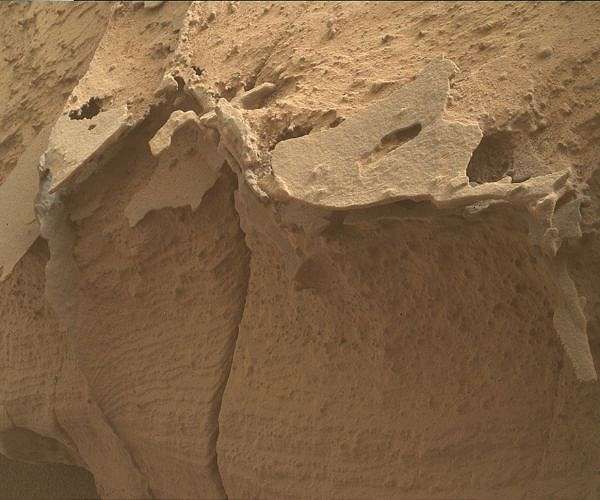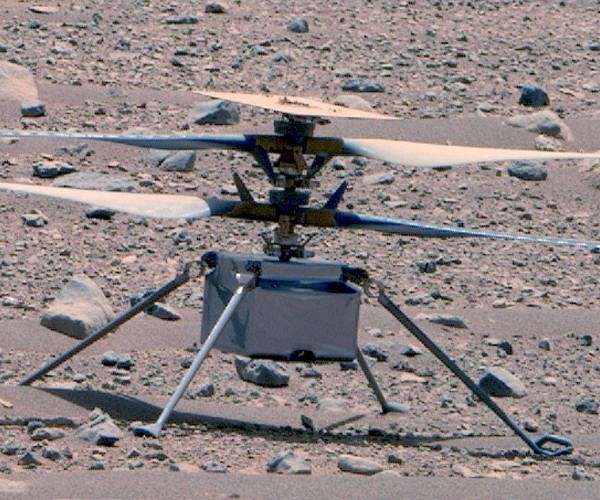Plates and Polygons Sols 4362-4363
by Emma Harris, Graduate Student at Natural History Museum, London
Pasadena CA (SPX) Nov 16, 2024
After a successful 23-meter (about 75 feet) drive today in pre-planning we found ourselves in front of some rocks with a curious dark, platy topping. This is similar to material we have seen previously including over the weekend where MAHLI imaged “Buttress Tree.” This beautiful hand-lens image is shown above, where you can see this more resistant platy texture at the top of the layered rock. Unfortunately it was deemed too unsafe to move the arm today, so no contact science observations were made on this dark material, but a plethora of remote science made up for it!
A curious curved fracture along a rock in the workspace became the target of our ChemCam LIBS laser shots called “Pioneer Basin.” ChemCam will then take a long-distance RMI looking back at Gediz Vallis channel, which we have been driving away from. Mastcam is focusing on taking two mosaics of areas of rocks that exhibit light- and dark-toned bands from orbit. We previously drove across these bands in January before we crossed the Gediz Vallis channel. Now that we are over the channel, we are about to drive on the dark, banded material once again. Mastcam is also imaging some interesting polygonal textures we see in a few rocks around the rover. To keep it simple, the science team named all four targets of polygonal rocks “Acrodectes Peak.”
As Curiosity drives further away from the Gediz Vallis channel, the exploration of the sulfate unit continues. Although the driving is tough at times, the beautiful discoveries and amazing geology make the tough times worth it. Let’s hope we can get some contact science activities safe and sound in the next plan.
Related Links
Mars Science Laboratory: Curiosity Rover
Mars News and Information at MarsDaily.com
Lunar Dreams and more



